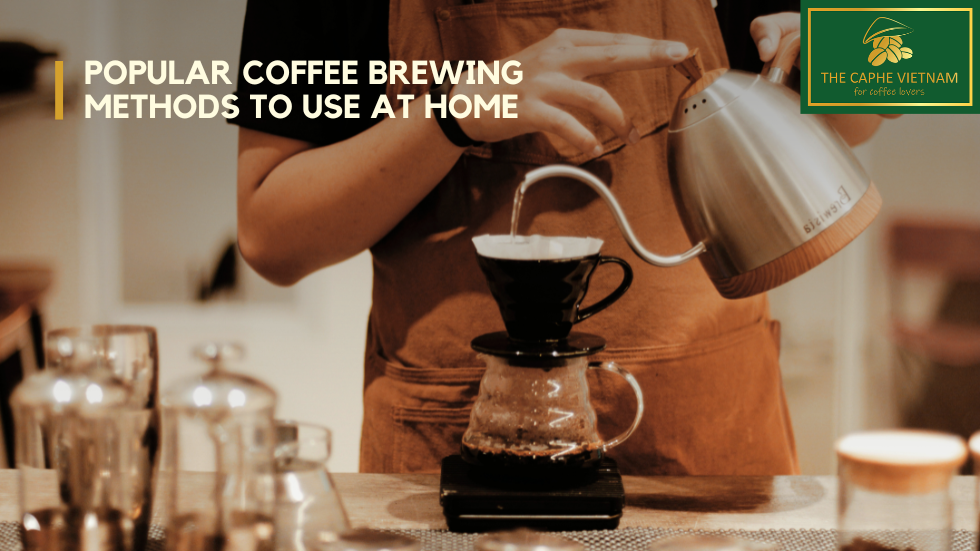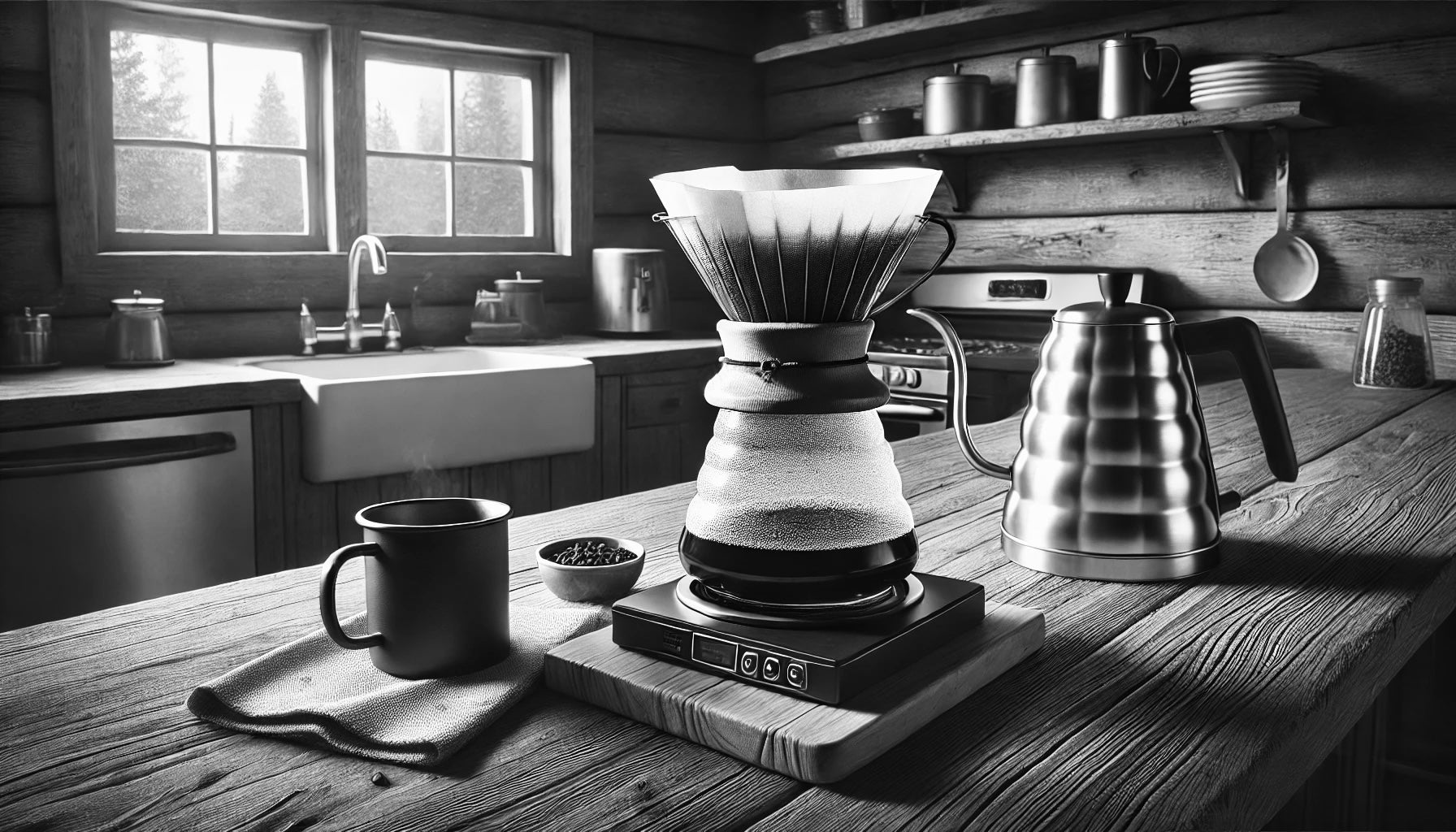Finding the Art of Coffee Brewing Methods: Tips for each Lover
Finding the Art of Coffee Brewing Methods: Tips for each Lover
Blog Article
The Scientific Research Behind Coffee Brewing: Exactly How Temperature and Time Affect Your Beverage
Understanding the scientific research behind coffee developing reveals that temperature and time are not mere variables however pivotal elements that determine the beverage's flavor profile and total high quality. The ideal developing temperature level normally falls in between 195 ° F and 205 ° F, while the period of extraction varies considerably throughout various techniques. This interplay of variables can cause a mug that is either fascinating or frustrating. As we check out the subtleties of these aspects, the concern occurs: how can one properly balance temperature and time to accomplish that best brew?
The Chemistry of Coffee Extraction
The chemistry of coffee removal looks into the detailed processes that transform raw coffee beans into the fragrant beverage delighted in worldwide. This makeover largely entails the solubility of various compounds existing in the beans, which are affected by aspects such as work size, water high quality, and the brewing technique utilized.
During the brewing procedure, warm water functions as a solvent, extracting soluble substances, consisting of high levels of caffeine, acids, lipids, and sugars, from the coffee premises. Each substance adds to the flavor profile, scent, and body of the last beverage. For example, acids are in charge of zesty and bright notes, while oils contribute to a rich mouthfeel.
The initial stages of developing extract acids and sugars, leading to a positive acidity, while long term extraction can lead to anger due to over-extraction of unfavorable substances. Recognizing these chemical interactions is critical for optimizing brewing methods, as the balance in between extraction time and water temperature level can significantly influence the total high quality of the coffee.
Suitable Brewing Temperatures
Locating the right brewing temperature level is important for unlocking the full possibility of coffee flavors and aromas - coffee brewing methods. Study shows that the optimal range for developing coffee lies between 195 ° F to 205 ° F(90 ° C to 96 ° C) Within this array, the extraction process effectively liquifies the preferable soluble compounds in coffee beans, leading to a delicious and well balanced cup
Developing at reduced temperatures, such as listed below 195 ° F(90 ° C ), may cause under-extraction, generating a weak and acidic brew with muted tastes. Alternatively, developing at temperature levels going beyond 205 ° F(96 ° C) can bring about over-extraction, creating a bitter and rough taste due to the too much dissolution of unfavorable compounds, such as tannins.
Furthermore, the optimal developing temperature can vary depending upon the coffee bean kind and roast degree. Lighter roasts commonly benefit from slightly higher temperatures to improve their intricate flavor profiles, while darker roasts may be better fit to lower temperature levels to mitigate anger.
Eventually, preserving precision in brewing temperatures is vital for attaining a harmonious equilibrium of tastes, guaranteeing that every mug of coffee supplies a rewarding sensory experience.
Influence of Brewing Time
Developing time plays a critical duty in establishing the flavor profile and overall high quality of coffee. The removal process, which influences the preference, scent, and body of the drink, is greatly depending on the length of time the coffee premises touch with water. Shorter brewing times can cause under-extraction, leading to a weak or sour flavor, as not more info here sufficient soluble substances are liquified. On the other hand, extended brewing can result in over-extraction, where undesirable substances are released, leading to a bitter or astringent taste.
Ideal brewing time differs depending upon the approach used and the work dimension of the coffee. For instance, a French press commonly calls for regarding four mins, while coffee extraction is generally completed within 25 to 30 secs. It is necessary to adjust developing time in combination with other variables, such as water temperature and coffee-to-water proportion, to achieve the desired flavor profile.
Recognizing the impact of developing time enables coffee enthusiasts to improve their brewing strategies, eventually improving the sensory experience of their cup (coffee brewing methods). With mindful focus to this variable, one can open the full possibility of the coffee, revealing its one-of-a-kind qualities and nuances
Brewing Techniques and Their Impacts

For example, approaches like French press and cool mixture permit a longer steeping time, causing a fuller body and robust taste due to boosted removal of oils and soluble solids. Alternatively, espresso developing makes use of high stress and a much shorter extraction time, creating a focused shot that emphasizes extreme tastes and a rich crema.
Pour-over strategies, such as Chemex or V60, offer a more regulated extraction procedure, allowing the brewer to control circulation price and water circulation, which can boost illumination and clarity. On the other hand, percolation methods cycle water with the coffee premises numerous times, leading to a more powerful, frequently bitter taste.
Finally, using paper filters versus metal filters can additionally influence the last taste; paper filters usually yield a cleaner mug by trapping oils and fine particles, while metal filters allow even more oils to travel through, contributing to a fuller mouthfeel - coffee brewing methods. Comprehending these nuances can elevate the coffee experience significantly
Tips for Perfecting Your Mixture
A well-executed brew can transform even the easiest coffee into an exceptional experience. To accomplish this, interest to see here now information is crucial. Start with high-quality, fresh roasted beans, as their taste profile lessens gradually. Grind the beans prior to making to optimize quality, ensuring the grind size matches your brewing approach-- coarser for French press and finer for coffee.
Water high quality plays an essential function; usage filtered water free from impurities. The perfect brewing temperature varies between 195 ° F and 205 ° F(90 ° C to 96 ° C ) As well hot can scorch the coffee, while too awesome might under-extract tastes.
Timing is similarly vital. For immersion approaches, steeping for three to five minutes is ideal, whereas drip techniques normally take around five mins. Explore brew times to find your favored toughness.

Conclusion
In recap, the intricate partnership in between temperature and time is critical in the coffee brewing procedure. Sticking to optimal brewing temperatures between 195 ° F and 205 ° F, alongside precise timing tailored to each method, makes sure the wanted flavor profile is accomplished. Comprehending these clinical concepts equips people to refine their developing strategies, eventually resulting in a more well balanced and satisfying coffee experience. Proficiency of these variables is essential for any type of coffee fanatic seeking quality in their drink.
Recognizing the scientific research behind coffee brewing discloses that temperature level and time are not mere variables yet crucial aspects that dictate the news drink's taste account and total top quality. Understanding these chemical interactions is important for maximizing brewing methods, as the balance in between removal time and water temperature can substantially affect the overall quality of the coffee.Brewing time plays a crucial duty in figuring out the flavor account and overall top quality of coffee. By focusing on these components-- bean quality, grind size, water temperature level, soaking time, and proportion-- you can raise your coffee brewing process, resulting in a continually remarkable mug.
In recap, the complex connection in between temperature level and time is paramount in the coffee developing procedure.
Report this page